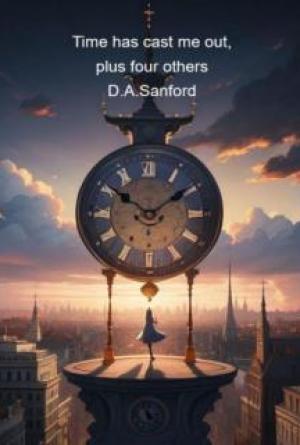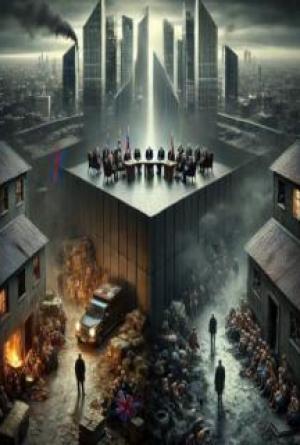Whilst the world slept
A Brief history of the events leading up to 1975, the genocide period of the Khmer Rouge.
After World War II and into the early 1950s, King Sihanouk's politics became more nationalistic and he began demanding that the French grant the country independence and departs, echoing the sentiments of the other nations of Indochina, Vietnam and Laos. He went into exile in Thailand in May of 1953 and refused to return until independence was granted. He returned when his overtures met with success and Cambodia became independent on November 9, 1953. On March 2, 1955, King Sihanouk abdicated in favour of his father, taking the post of prime minister a few months later. Following his father's death in 1960, he gained election as head of state, but received the title of prince rather than king. In 1963, he forced a change in the constitution that made him head of state for life. While he had officially abdicated as king, he had created a constitutional office for himself that was exactly equal to that of the former Kingship.
In the spring of 1965, he made a deal with China and North Vietnam to allow the presence of permanent North Vietnamese bases in eastern Cambodia and to allow military supplies from China to reach Vietnam by Cambodian ports. Cambodia and Cambodian individuals were compensated by Chinese purchases of the Cambodian rice crop by China at inflated prices. He also at this time made any number of speeches calling the triumph of Communism in Southeast Asia inevitable and suggesting Maoist ideas were worthy of emulation. In 1966 and 1967, Sihanouk unleashed a wave of political repression that drove many on the left out of mainstream politics.
He had alienated the left, allowed the North Vietnamese to establish bases within Cambodia and the prime minister convened the National Assembly which voted to depose Sihanouk as head of state and give emergency powers to Lon Nol. staked everything on China's good will. On March 18, 1970, while he was travelling out of the country, Lon Nol was elected as the first president of the Khmer Republic in a blatantly rigged election. As per the new constitution (ratified on 30 April), political parties formed in the new nation, quickly becoming a source of political factionalism. General Sutsakhan stated: "the seeds of democratization, which had been thrown into the wind with such goodwill by the Khmer leaders, returned for the Khmer Republic nothing but a poor harvest.
On 29 April 1970, South Vietnamese and U.S. units unleashed a limited, multi-pronged bombing attack on Cambodia. Nixon wanted to solidify Lon Nol's position, although the Cambodian leader was not even informed in advance of the decision to invade his country. He learned about it only after it had begun from the head of the U.S. mission, who had himself learned about it from a radio broadcast.
From 1972 through 1974, the war was conducted along FANK's lines of communications north and south of the capital. Limited offensives were launched to maintain contact with the rice-growing regions of the northwest and along the Mekong River and Route 5, the Republic's overland connections to South Vietnam. The strategy of the Khmer Rouge was to gradually cut those lines of communication and squeeze Phnom Penh. As a result, FANK forces became fragmented, isolated, and unable to lend one another mutual support.
In January 1973, the Paris Peace Accord was signed, ending the conflict (for the time being) in South Vietnam and Laos. On 29 January, Lon Nol proclaimed a unilateral cease-fire throughout the nation. All U.S. bombing operations were halted in hopes of securing a chance for peace. It was not to be. The Khmer Rouge simply ignored the proclamation and carried on fighting. By March, heavy casualties, desertions, and low recruitment had forced Lon Nol to introduce conscription and, in April, insurgent forces launched an offensive that pushed into the suburbs of the capital. The U.S. Air Force responded by launching an intense bombing operation that forced the communists back into the countryside after being decimated by the air strikes.
As late as 1972-1973, it was a commonly held belief, both within and outside Cambodia, that the war was essentially a foreign conflict that had not fundamentally altered the nature of the Khmer people. By late 1973, there was a growing awareness among the government and population of the fanaticism, total lack of concern over casualties, and complete rejection of any offer of peace talks which "began to suggest that Khmer Rouge fanaticism and capacity for violence were deeper than anyone had suspected.
Reports of the brutal policies of the organization soon made their way to Phnom Penh and into the population foretelling a violent madness that was about to consume the nation. There were tales of the forced relocations of entire villages, of the summary execution of any who disobeyed or even asked questions, the forbidding of religious practices, of monks who were defrocked or murdered, and where traditional sexual and marital habits were foresworn. War was one thing, the offhand manner in which the Khmer Rouge dealt out death, so contrary to the Khmer character, was quite another. Reports of these atrocities began to surface during the same period in which North Vietnamese troops were withdrawing from the Cambodian battlefields. This was no coincidence. The concentration of the PAVN effort on South Vietnam allowed the Khmer Rouge to apply their doctrine and policies without restraint for the first time.
The Khmer Rouge leadership was almost completely unknown by the public. They were referred to by their fellow countrymen as peap prey - the forest army. Previously, the very existence of the communist party as a component of GRUNK had been hidden. Within the "liberated zones" it was simply referred to as "Angka" - the organization. During 1973, the communist party fell under the control of its most fanatical members, Pol Pot and Son Sen, who believed that "Cambodia was to go through a total social revolution and that everything that had preceded it was anathema and must be destroyed." Also hidden from scrutiny was the growing antagonism between the Khmer Rouge and their North Vietnamese allies. The radical leadership of the party could never escape the suspicion that Hanoi had designs on building an Indochinese federation with the North Vietnamese as its master. The Khmer Rouge were ideologically tied to the Chinese, while North Vietnam's chief supporters, the Soviet Union, still recognized the Lon Nol.
By the time the Khmer Rouge initiated their dry-season offensive to capture the beleaguered Cambodian capital on 1 January 1975, the Republic was in chaos. The economy had been gutted, the transportation network had been reduced to air and water systems, the rice harvest had been reduced by one-quarter, and the supply of freshwater fish (the chief source of protein) had declined drastically. The cost of food was 20 times greater than pre-war levels and unemployment was not even measured anymore.
The final offensive against Phnom Penh, April 1975.
Phnom Penh, which had a pre-war population of around 600,000, was overwhelmed by refugees (who continued to flood in from the steadily collapsing defence perimeter), growing to a size of around two million. These helpless and desperate civilians had no jobs and little in the way of food, shelter, or medical care. Their condition (and the governments) only worsened when Khmer Rouge forces gradually gained control of the banks of the Mekong. From the riverbanks, their mines and gunfire steadily reduced the river convoys bringing relief supplies of food, fuel, and ammunition to the slowly starving city.
Sihanouk showed his support for the Khmer Rouge by visiting them in the field, their ranks swelled from 6000 to 50,000 fighters. Many of these new recruits for the Khmer Rouge were apolitical peasants who fought in support of the king, not for communism, of which they had little understanding. When the Khmer Republic fell to the Khmer Rouge in April 1975, Prince Sihanouk became the symbolic head of state of the new regime while Pol Pot remained in power. The next year, on April 4, 1976, the Khmer Rouge forced Sihanouk out of office again and into political retirement.
The Khmer Rouge was the ruling political party of Cambodia-which it renamed the Democratic Kampuchea-from 1975 to 1979.
The term "Khmer Rouge," meaning "Red Khmer" in French, was coined by Cambodian head of state Norodom Sihanouk and was later adopted by English speakers. It was used to refer to a succession of Communist parties in Cambodia which evolved into the Communist Party of Kampuchea (CPK) and later the Party of Democratic Kampuchea. The organization was also known as the Khmer Communist Party and the National Army of Democratic Kampuchea.
The Khmer Rouge is remembered mainly for the deaths of an estimated 1.7 million people (estimates range from 850,000 to two million) under its regime, through execution, starvation and forced labour. Following their leader Pol Pot, who referred to himself as brother number one. The Khmer Rouge imposed an extreme form of social engineering on Cambodian society, a radical form of agrarian communism where the whole population had to work in collective farms or forced labour projects. In terms of the number of people killed as a proportion of the population (est. 7.5 million people, as of 1975), it was one of the most lethal regimes of the 20th century. One of their mottos, in reference to the New People, was: "To keep you is of no benefit. To kill you is no loss."
Whilst in power, the Khmer Rouge carried out a radical program that included isolating the country from foreign influence, closing schools, hospitals and factories, abolishing banking, finance and currency, outlawing all religions, confiscating all private property and relocating people from urban areas to collective farms where forced labour was widespread. The purpose of this policy, to turn all Cambodians into "Base People" through agricultural labour. These actions resulted in massive deaths through executions, work exhaustion, illness, and starvation.
In Phnom Penh and other cities, the Khmer Rouge told residents that they would be moved only about "two or three kilometres" outside the city and would return in "two or three days." Some witnesses say they were told that the evacuation was because of the "threat of American bombing" and that they did not have to lock their houses since the Khmer Rouge would "take care of everything" until they returned. These were not the first evacuations of civilian populations by the Khmer Rouge. Similar evacuations of populations without possessions had been occurring on a smaller scale since the early 1970s.
The Khmer Rouge attempted to turn Cambodia into a classless society by depopulating cities and forcing the urban population ("New People") into agricultural communes. The entire population was forced to become farmers in labour camps. During their four years in power, the Khmer Rouge overworked and starved the population, at the same time executing selected groups who had the potential to undermine the new state (including intellectuals or even those that had stereotypical signs of learning, such as glasses) and killing many others for even minor breaches of rules. Cambodians were expected to produce three Tons of rice per hectare; before the Khmer Rouge era, the average was only one Ton per hectare. The Khmer Rouge forced people to work for 16 hours non-stop, without adequate rest or food. They did not believe in western medicine but instead favoured traditional peasant medicine; many died as a result. Family relationships not sanctioned by the state were also banned, and family members could be put to death for communicating with each other. In any case, family members were often relocated to different parts of the country with all postal and telephone services abolished. The total lack of agricultural knowledge by the former city dwellers made famine inevitable. Rural dwellers were often unsympathetic or too frightened to assist them. Such acts as picking wild fruit or berries were seen as private enterprise.
The Khmer language has a complex system of usages to define speakers' rank and social status. During the rule of the Khmer Rouge, these usages were abolished. People were encouraged to call each other 'friend' or 'comrade' (Khmer: mitt), and to avoid traditional signs of deference such as bowing or folding the hands in salutation, known as samphea. Language was transformed in other ways. The Khmer Rouge invented new terms. People were told to 'forge' (lot dam) a new revolutionary character, that they were the 'instruments' (Khmer: opokar) of the ruling body known as 'Angkar' (Khmer: pronounced ahngkah; meaning 'The Organization'), and that nostalgia for pre-revolutionary times (choeu stek arom, or 'memory sickness') could result in execution.
The ideology of the Khmer Rouge evolved over time. In the early days, it was an orthodox communist party and looked to the Vietnamese Communists for guidance. It became more Stalinist and anti-intellectual when groups of students who had been studying in France returned to Cambodia. The students, including future party leader Pol Pot, had been heavily influenced by the example of the French Communist Party (PCF). After 1960, the Khmer Rouge developed its own unique political ideas. For example, contrary to most Marxist doctrine, the Khmer Rouge considered the farmers in the countryside to be the proletariat and the true representatives of the working class, a form of Maoism which brought them onto the PRC side of the Soviet-Sino Split. By the 1970s, the ideology of the Khmer Rouge combined its own ideas with the anti-colonialist ideas of the PCF, which its leaders had acquired during their education in French universities in the 1950s. The Khmer Rouge leaders were also privately very resentful of what they saw as the arrogant attitude of the Vietnamese, and were determined to establish a form of communism very different from the Vietnamese model and also from other Communist countries, including China.
The main soldiers and disciples of the Khmer Rouge army were the children who were taken way from their parents (uncorrupted by the 'new people' who were many educated Cambodians) and brainwashed to believe in the 'Angka'(the organisation) and became the judge jurors and executioners of anyone failing to abide by the doctrines of Ankar many turned on their parents and killed their own or friends relatives in order to gain favour and rise up the ranks within the Rouge army usual age for a Khmer soldier was 13 and commanders 15
After four years of rule, the Khmer Rouge regime was removed from power in 1979 as a result of an invasion by the Socialist Republic of Vietnam and was replaced by moderate, pro-Vietnamese Communists. It survived into the 1990s as a resistance movement operating in western Cambodia from bases in Thailand. In 1996, following a peace agreement, their leader Pol Pot formally dissolved the organization. Pol Pot died April 15, 1998, having never been put on trial.
This vile period has been etched deep in the Cambodians (Khmers) and affected every present family. It is a period they do not like to talk about openly and a very high percentage had family members butchered during the Khmer Rouge rule. The Cambodian people have come through this period with strength and resilience and seem to be a gentle and peace loving people now hungry for knowledge and are able to move forward with drive and vigour
War trials are still going on nowadays for leaders and butchers of the regime. Some mass graves from this period can be viewed at the choeung Ek killing fields 12km from Phnom Penh and chilling reminders of this time at S21 the Tuol Sleng genocide museum, which gives a grisly reminder of a time best forgotten, but a lesson best remembered so never repeated.
If you don't know how to fix the world. Stop breaking it.
Novels by Robert A Webster
Siam Storm
A stolen relic launches a deadly chase through Thailand, where three English lads are having the holiday experience of a lifetime. Enjoy their first adventure as they become embroiled in the recovery and the subsequent voyage of discovery whilst undergoing the many stages of intoxication from juiced to wankered as they hunt for a good place at the bar. A must read for anybody travelling to the land of smiles.
Chalice
The discovery of a mysterious corpse leaves law enforcement agencies baffled. This adventure sees the lads join forces with their new friend and ally, whilst they once again attempt to recover a holy relic, this time stolen for a completely new and sinister reason. The chase takes them into Cambodia, as they thwart plans, which could affect the planet and change them into fruit based drinkers.
Bimat
A kidnap and ransom demand lead our hapless heroes into a pursuit through Vietnam. They encounter an old foe, driven by obsession in his revenge driven quest. This time they face many challenges in both their adventure and their personal circumstance and although they almost lose everything, they never lose hope.
Trilogy:
All three, South East Asia adventures.
P.A.T.H
A team of three psychics use their unique talents to provide a link between the mortal world and the celestial plane in order to locate lost treasures and return them to their recipients. One particular case finds the team caught up in a plot that had been concaved during world war two, then, instigated in the present day. The team has to solve a mystery that threatens to split the delicate fabric joining the two worlds.
The return of the Reich.
SPICE
Ben Bakewell is a master baker with a unique gift that made him the grand master of his culinary craft. More commonly known as ‘Cake’ he meets up with Ravuth, a Cambodian man residing in England ,who has spent the majority of his life trying to trace his long lost family..
Jed Culver is a disgraced D.E.A agent whose bitterness for his old employer and lust for revenge lead him along a deadly path, as he also pursues the plant, although for a far more sinister gain.
This thrilling, but yet sometimes hilarious quest, takes you from the glitz and glamour of the fashionable London restaurant scene, to the wild, untamed tropical forests surrounding the Cardamom mountains region of South East Asia, as the participants race to discover the whereabouts of a remarkable plant and locate a misplaced family
FOSSILS
Enjoy the hilarious antics of an elderly four piece band as they embark on a whirlwind tour of several countries in South East Asia, unaware of their amazing worldwide success. Steve Baker (Strat) Elvin Stanley (Chippers) Charles Clark (Nobby) and Wayne Logan (Sticks) more famously known as ‘Fossils,’ are four musicians from varying background who are inadvertently united and form a band with a unique and exciting sound that filled an auditory hiatus that has been lacking for decades in the modern day music industry. Pursued and hounded by ruthless record producers, this unassuming rock band discover a new, exciting and carefree way of life, which they enjoy to the fullest, or at least what remains of it.
Viagra, snuff, and Rock’n’roll.
WWW.buddhasauthor.com







